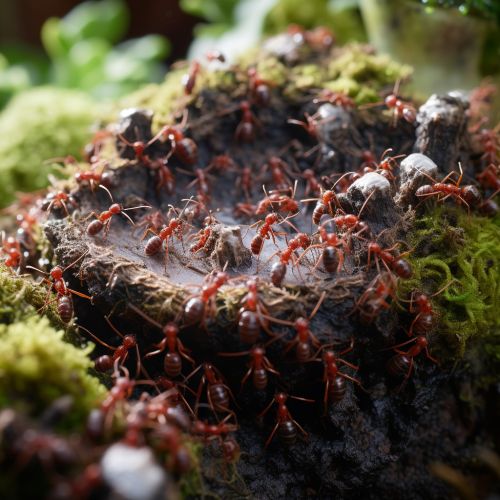The Evolution of Insect Sociality and Division of Labor
Introduction
The evolutionary development of insect sociality and division of labor has been a subject of extensive study in the field of ethology. This article delves into the intricate processes that have led to the emergence of complex social structures and labor division in various insect species.


Evolution of Insect Sociality
The evolution of insect sociality is a fascinating aspect of biological evolution. Social insects, such as ants, bees, wasps, and termites, live in colonies where individuals cooperate to achieve common goals. The evolution of sociality in insects is believed to have occurred independently in different lineages, a phenomenon known as convergent evolution.
Factors Influencing the Evolution of Sociality
Several factors have influenced the evolution of sociality in insects. One of the primary factors is the kin selection theory, which suggests that individuals are more likely to help relatives because they share a significant proportion of their genes. This theory is often used to explain the altruistic behavior observed in many social insects.
Another factor is the ecological benefits of group living. Living in groups can provide protection from predators, increase foraging efficiency, and improve the chances of successful reproduction.
Division of Labor in Insect Societies
Division of labor is a characteristic feature of insect societies. In a typical insect colony, different individuals perform different tasks, such as foraging for food, defending the colony, or caring for the young. This division of labor is not rigid and can change based on the needs of the colony.
Mechanisms of Labor Division
The division of labor in insect societies is primarily regulated by two mechanisms: age polyethism and task allocation. In age polyethism, the tasks performed by an individual change as it ages. For example, in honeybee colonies, young bees typically perform tasks inside the hive, such as caring for the brood, while older bees perform tasks outside the hive, such as foraging for food.
Task allocation, on the other hand, is the process by which tasks are distributed among individuals in a colony. This process is often influenced by factors such as the size and age of the individual, the needs of the colony, and environmental conditions.
Implications of Insect Sociality and Division of Labor
The evolution of sociality and division of labor in insects has significant implications for our understanding of biological evolution and the organization of complex societies. It provides insights into the mechanisms of cooperation and conflict, the evolution of altruism, and the role of kin selection in social evolution.
